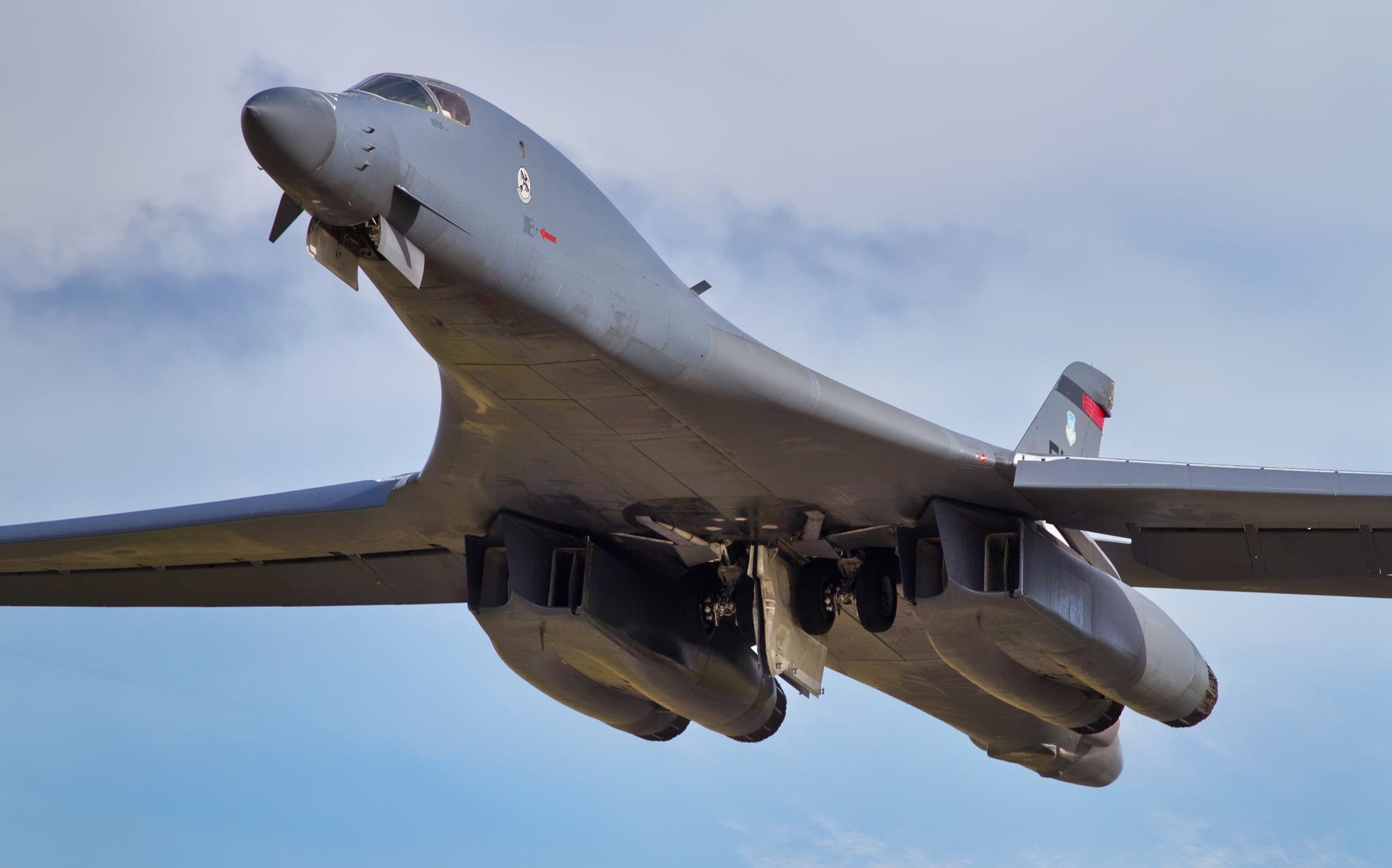Originally designed as a supersonic nuclear weapons delivery platform during the Cold War, the B-1B transitioned to a conventional role following the collapse of the Soviet Union and the end of Cold War tensions.
Currently, 45 Lancers remain in service, down from a Cold War peak of around 100. Existing Lancer bombers continue to play a crucial role in long-range strike missions, particularly against high-value targets in hostile environments, notably during the war in Iraq. The bomber’s range and payload capacity make it a unique asset in modern combat operations.
Cold War and B-1B Bomber
During the Cold War, the B-1B Lancer was conceived as a low-altitude penetrator capable of delivering nuclear weapons deep into Soviet territory.
After the Cold War, however, its mission changed dramatically, and the Air Force stripped the aircraft of its nuclear delivery capabilities due to later arms reduction agreements.
Since then, the B-1B has been optimized by the U.S. Air Force for conventional, non-nuclear warfare.
The large bomber offers commanders a unique combination of speed, range, and ability to carry a massive ordnance payload, even though the jet bomber’s role as a nuclear weapons delivery platform has disappeared. But as of late, several Lancers have left deep storage and retaken to the skies.
Out of the Boneyard and into the Air
Davis–Monthan Air Force Base, home to the 309th Aerospace Maintenance and Regeneration Group, is the B-1B Lancer main boneyard, or storage site. Aircraft sent to AMARG undergo differing levels of storage and preservation, depending on their future anticipated use.
Storage procedures at AMARG include draining fuel, applying protective coatings to exposed surfaces, and installing environmental covering to prevent corrosion. AMARG’s location in Arizona is ideal for storage, as the area’s desert climate is arid, receives little rainfall, and its hard soil ensures aircraft stored there do not sink into the ground.
The Lancers at AMARG are typically placed in Type 1000 storage, a condition that keeps them in shape for rapid reactivation.
Reactivation of Old B-1B Lancers
Earlier this year, a B-1B was pulled from AMARG and returned to operational status. It had been placed in storage to save costs and serve as a reserve platform, but the Air Force determined that increasing demands for bomber availability warranted its return.
After undergoing extensive inspections and repairs to bring it up to operational standards, the jet bomber has since rejoined the U.S. Air Force active Lancer fleet.
Into the Future
The future of the B-1B Lancer fleet is an open question, though for now, the aircraft are expected to remain in service until the early 2030s. However, maintenance challenges and the growing costs of sustaining the aging fleet make its long-term viability a concern.
The Air Force plans to replace the Lancer with the B-21 Raider, a sixth-generation stealth bomber currently under development. The Raider will likely enter service with the Air Force by the late 2020s, at which point it will slowly phase out the B-1B and take over the Lancer’s long-range strike role — though it will almost certainly have a nuclear strike capability, unlike the B-1B.
Although the B-1B’s days in the Air Force are numbered, for now, at least, it plays a long-range strike role that can’t be replaced.
If more Lancers will be taken from the Boneyard and reactivated remains to be seen — but will likely depend on how many of the bombers are damaged or destroyed before the Raider comes online with the Air Force.
About the Author: Caleb Larson
Caleb Larson is an American multiformat journalist based in Berlin, Germany. His work covers the intersection of conflict and society, focusing on American foreign policy and European security. He has reported from Germany, Russia, and the United States. Most recently, he covered the war in Ukraine, reporting extensively on the war’s shifting battle lines from Donbas and writing on the war’s civilian and humanitarian toll. Previously, he worked as a Defense Reporter for POLITICO Europe. You can follow his latest work on X.

